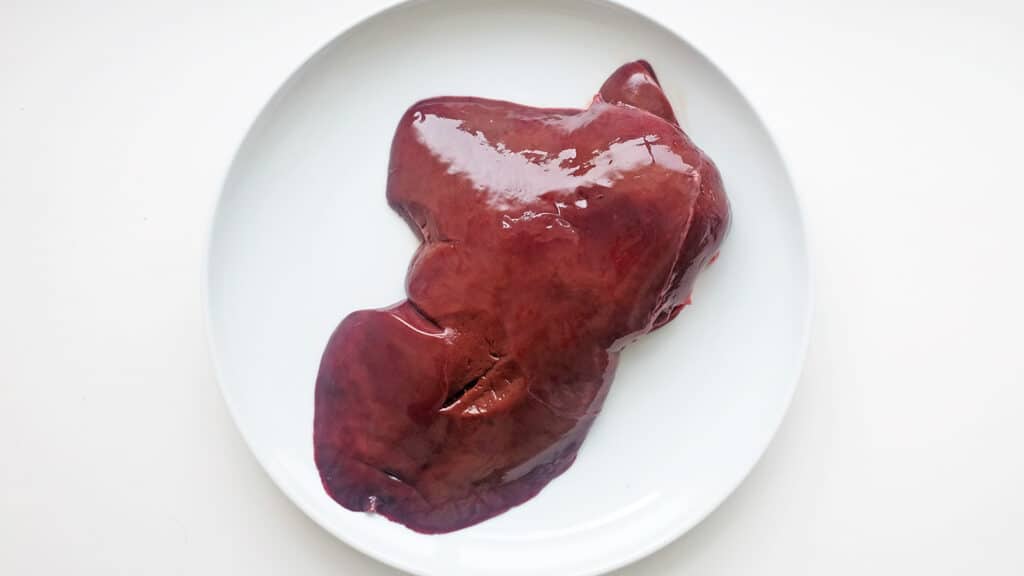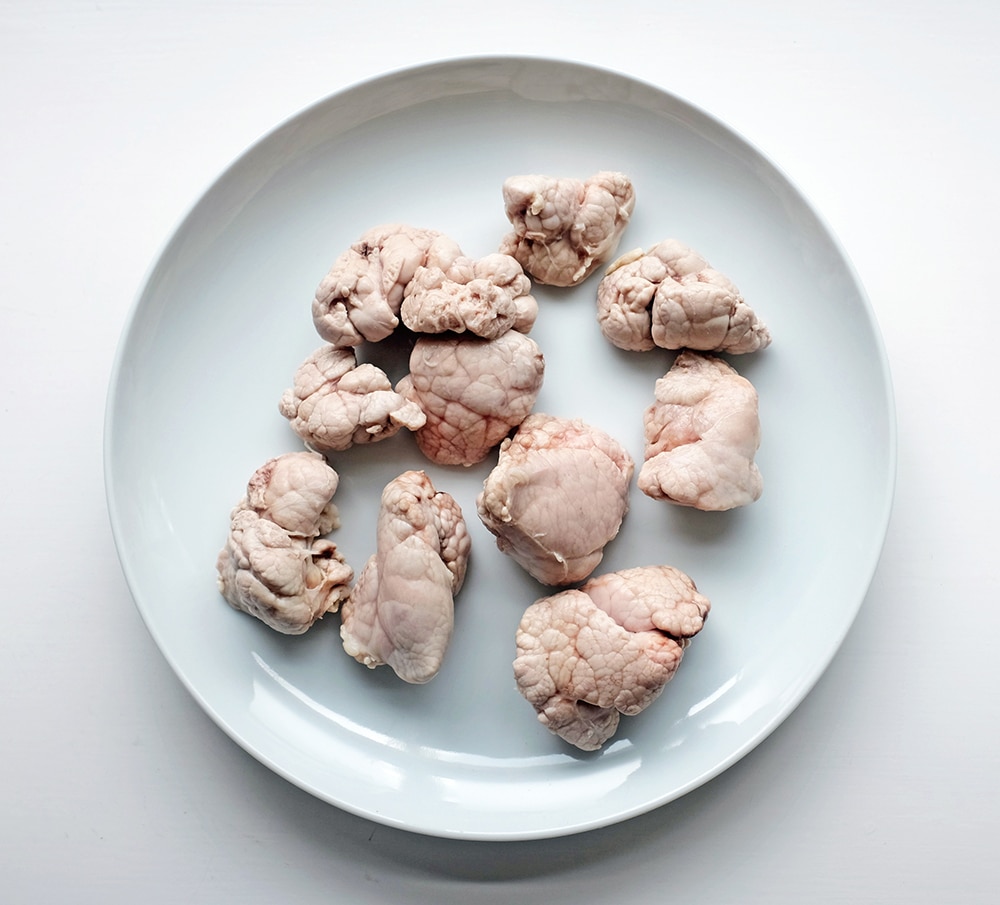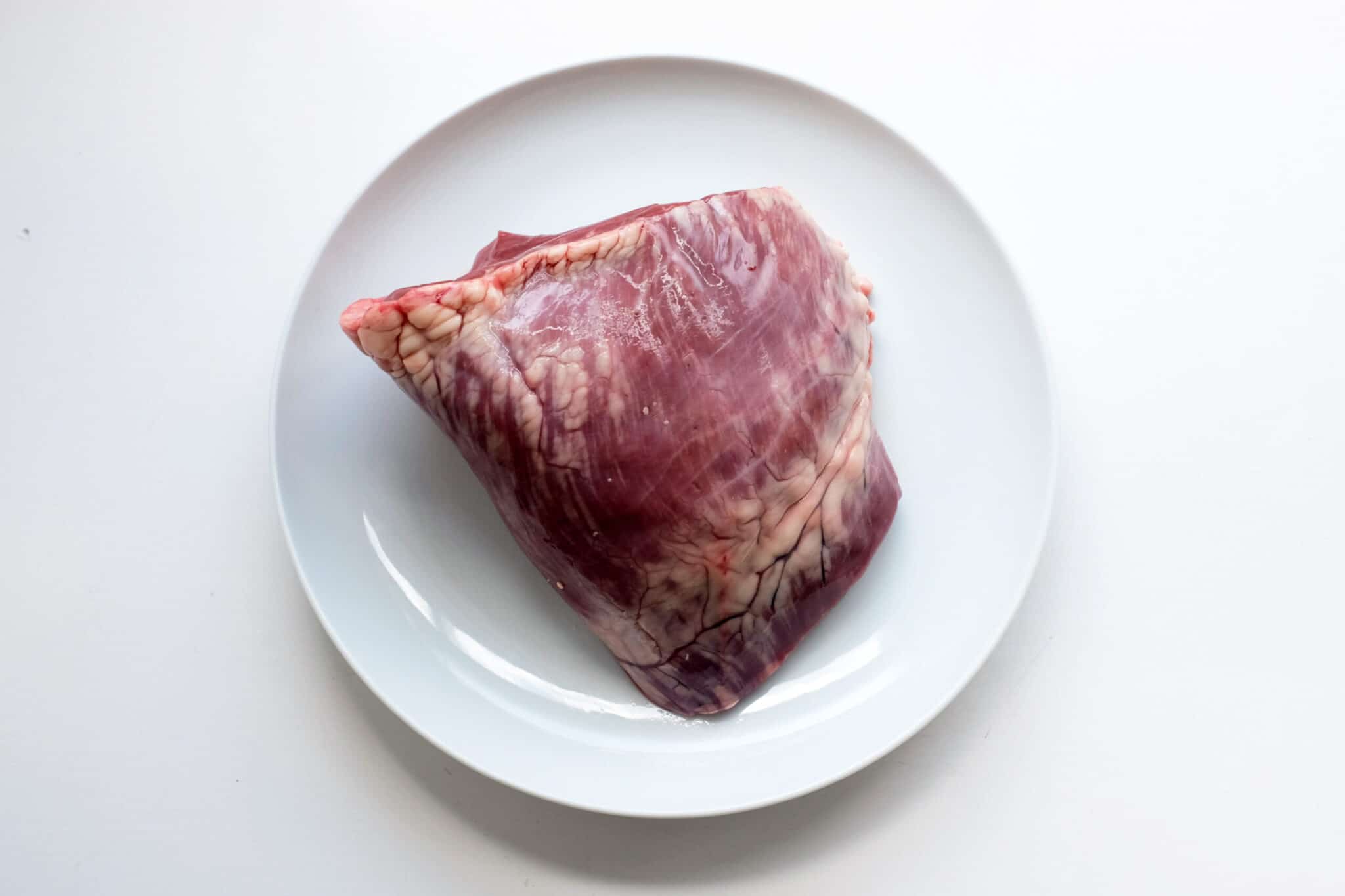The offal project: the liver
Ed Smith looks in depth at the offal available in the Market. This time: liver


“HANNIBAL LECTOR’S IMMORTAL LINE MAY HAVE CONTRIBUTED TO MANY PEOPLE’S RELUCTANCE TO TASTE THIS MEAT”
Many cuts of meat qualify as offal, but I suspect our tastebuds and desire for offal in general have been tarnished by the over-cooking of two specific cuts: kidneys and liver. Hannibal Lector’s immortal line, “I ate his liver with some fava beans and a nice chianti… ffffffffffffffssttsttt”, may also have contributed, even if only subconsciously, to many people’s reluctance to taste this meat. At the very least it highlights the visceral nature of the organ, maybe even humanises the organ of other animals too.
Yet not everyone is repulsed by the idea of eating liver, and I may as well let you know from the very beginning of the piece, that I think you should give it another try.
What does liver taste like?
The liver does three things: it cleans toxins from blood; it produces bile; and it stores sugar (as glycogen). It should be no surprise, given this organ deals in blood, that the overriding and often negatively associated taste people are left with is ‘metallic’; the ferrous nature of the red stuff is well known. The fact liver also produces bile, however, can perhaps also help to explain the slightly bitter aftertaste of this type of meat.
But its role as a store of sugar might also help to explain why, actually, liver ain’t so bad after all. A hint of sweetness rounds things out and ensures weirdos like me keep coming back for more. There’s a richness to liver, which explains some of its appeal. It shines alongside soft, buttery, mashed potato and paired with onion gravy, or next to a sharply dressed bitter leaf salad, where there’s plenty of acidity to cut through the meat.
Texture-wise, when cooked right, liver is smooth, silky and cuts almost like butter. There’s little or no gristle, fat or bone impeding an easy bite through, though because it’s very lean, it’s important to cook it medium rare, lest you be left with a tough old leather boot.
How does the flavour differ between animals?
Every animal has a liver, and while the generalisations above ring true to all of them, there are some subtle differences in taste and toughness.
Two of the most prized livers are calf’s liver and chicken livers. Both are on the sweeter end of the offal spectrum, mild in their meatiness and relatively tender and delicate, though for obvious reasons, chicken livers are much, much smaller than the other meats mentioned here. As well as starring in their own dishes, they are often used to enrich a ragu or stew – look to Italian and Persian cuisine for examples of this.
Beef liver is meaty, but also darker and quite a lot tougher than a calf’s liver. Lamb is mild, a little sheepy, and goat is similar – perhaps milder still and also sweet, particularly when from a kid goat.
Pig’s liver seems to be the least desired of all – it can be particularly pungent and bitter, requiring lots of hot spices to make it palatable (to westerners, at least).
Finally, of course, there’s the matter of goose and duck livers in the form of foie gras. Through force-feeding, these livers become bloated and extremely rich. Personally, I’m not a fan; though that’s more for matters of taste than ethical reasons.
Cooking options
In my experience, there are three ways to cook and eat liver:
— Slice into 3-4cm steaks, then cook to medium-rare on a dry heat, ideally achieving a crust on the outside while keeping things soft and blushing pink within.
— Brown rapidly (but keep rare), then blitz or mix into a pate or terrine, allowing residual heat, or the gentle heat of a secondary cooking stage to finish the job.
— Cut into small pieces and include with other meats in something like a faggot or sausage.
Whichever way it’s cooked, it’s pretty essential to ensure liver is not ‘well done’, as by then, any textural enjoyment is long gone, and the iron and bitter tastes are exaggerated.
You’ll sometimes read of liver being left in milk to remove bitter flavours. I only think this necessary with beef and pig. Other than that, it’s only necessary to trim a few sinews and nuggets of fat from the surface.
Classic western dishes tend to match liver with onion or pepper-heavy sauces, perhaps with a cream or fortified wine base. From the east, the power of a pig liver is often masked by Sichuan peppercorns or chilli. If I turn to my recipe books for specific ideas, though, I spy a number of eye-opening ideas to try:
Fergus Henderson’s dried salted pig’s liver, radishes and boiled eggs in Nose to Tail Eating stands out as being particularly bonkers.
I also like the three liver recipes in Simon Hopkinson’s Roast Chicken and Other Stories, not least calf’s liver, Venetian style, which seems to be similar to most liver and onion recipes, save that the liver is exceptionally thin and barely cooked, and there’s a dash of red wine vinegar and parsley for good measure, so it’s perhaps a little lighter than the average Anglo version.
See also Hopkinson’s version of Richard Olney’s terrine of poultry livers, and his duck livers, crepes Parmentier and onion marmalade – both from the same book.
Claudia Roden has a recipe for Catalonian calf’s liver with onions and brandy in her Food of Spain (swap in chicken livers and oloroso for an Andalusian version).
David Thompson’s seminal Thai Food includes an intriguing recipe for calf’s liver, in which 5mm-thick slices are dipped in an out of gently simmering water until just cooked, and then dressed with lime juice, fish sauce, and a variety of fresh herbs. This is based on a classic Thai grilled pork liver dish (dap warn), which he doesn’t seem to like very much.
You must try Itamar Srulovich and Sarit Packer’s chopped (chicken) liver in their Honey & Co cookbook. This is a dish typical of Jewish cuisine, which is rich and sweet and milky and so much better than it looks and sounds – particularly if you’ve soft bread to scoop it up with.
And, I’m mighty keen on Olia Hercules’ chicken liver, buckwheat and crispy shallots in Mamushka. Not to mention Ukrainian enriched buns stuffed with chicken hearts and liver, flashed in madeira.


